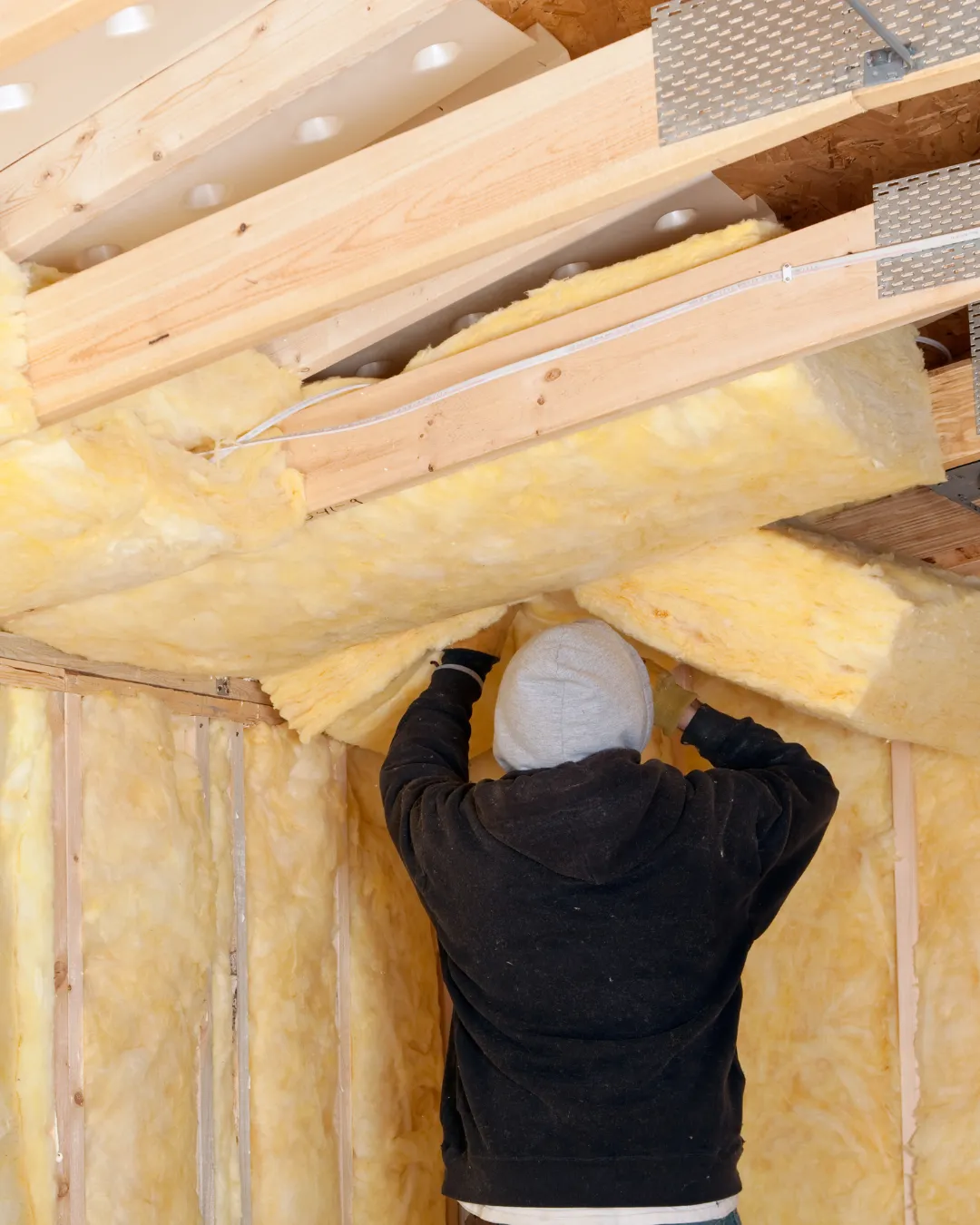Προωθημένο
A Comprehensive Guide to Insulation in North Carolina: Types, Climate Considerations, and Building Standards

In a state as geographically diverse as North Carolina, proper insulation plays a vital role in enhancing indoor comfort, reducing energy consumption, and maintaining structural durability. From the mountainous west to the coastal plains in the east, the state experiences a range of climates that require tailored insulation solutions. Whether it’s for new construction or retrofitting older buildings, understanding the landscape of insulation North Carolina is essential for homeowners, builders, and developers.
This guide explores the factors influencing insulation choices across North Carolina, including regional climate differences, insulation types, building code requirements, energy efficiency goals, and environmental concerns. The focus is strictly on the topic of insulation as it applies to North Carolina, offering a neutral, informative overview for decision-makers across the state.
Climate Zones in North Carolina and Their Impact on Insulation
North Carolina spans three primary climate zones, each influencing insulation requirements differently:
-
Mountain Region (Western NC): This area includes the Appalachian Mountains, where winters are colder and snowfall is more common. Homes here require insulation that effectively retains heat during extended cold periods.
-
Piedmont Region (Central NC): A transitional zone with hot, humid summers and moderately cold winters. Insulation in this region must balance thermal resistance with moisture control.
-
Coastal Plain (Eastern NC): The coast experiences mild winters and long, humid summers. Insulation here needs to address heat gain and humidity infiltration.
These climate differences affect decisions about insulation materials, R-values (thermal resistance ratings), moisture barriers, and ventilation systems.
Common Types of Insulation Used in North Carolina
Several types of insulation are commonly used in residential and commercial buildings across North Carolina. Each comes with unique benefits and is suited to different structural and environmental conditions.
1. Fiberglass Insulation
Widely available and cost-effective, fiberglass insulation is used in batt or blown-in forms. It performs well in both attics and wall cavities. However, in humid areas like the Coastal Plain, it must be carefully installed to avoid moisture retention.
2. Spray Foam Insulation
Both open-cell and closed-cell spray foam are used across North Carolina. Closed-cell foam is especially beneficial in humid and flood-prone coastal areas due to its air-sealing and moisture-resistant properties. In colder regions like the mountains, its high R-value helps maintain thermal comfort during the winter.
3. Cellulose Insulation
Made from recycled paper treated with fire retardants, cellulose is a popular option for retrofitting older homes. Its ability to fill irregular cavities makes it suitable for historical homes common in cities like Asheville and Durham.
4. Rigid Foam Boards
Often used in basements or exterior walls, rigid foam insulation is moisture-resistant and offers a high R-value per inch. It’s frequently used in construction along the coast where groundwater and humidity are concerns.
5. Mineral Wool
Known for its fire resistance and soundproofing qualities, mineral wool is gaining popularity in urban developments and multi-family housing projects across the state.
Understanding R-Value Recommendations in North Carolina
The R-value indicates a material's resistance to heat flow. The higher the R-value, the better the insulation's thermal performance. In North Carolina, recommended R-values vary based on geographic location and the part of the building being insulated.
According to the U.S. Department of Energy’s guidelines for North Carolina:
-
Attics: R-38 to R-60
-
Walls: R-13 to R-21
-
Floors: R-25 to R-30
-
Crawl Spaces: R-19 or higher, especially in the western and central parts of the state
These values provide a benchmark but may be adjusted based on the specific needs of a home or structure, especially older or custom-built properties.
Building Code Requirements for Insulation in North Carolina
North Carolina enforces statewide energy efficiency codes that dictate minimum insulation requirements for all new residential and commercial constructions. These codes are adapted from the International Energy Conservation Code (IECC) and are updated periodically by the North Carolina Department of Insurance.
Some key highlights include:
-
Air Sealing Requirements: All buildings must minimize air leaks through caulking, sealing, and weather stripping.
-
Continuous Insulation: In certain wall assemblies, continuous insulation is required to reduce thermal bridging.
-
Duct Insulation: Ductwork in unconditioned spaces must meet minimum R-values, typically R-8 in attics and R-6 in other areas.
-
Inspection and Compliance: Building inspectors verify insulation installation as part of the standard permitting process.
For renovation projects, insulation upgrades may be required when existing structures are altered significantly.
Moisture Management: A Key Factor in NC Insulation Strategies
Humidity is a major concern across much of North Carolina, especially in the Piedmont and Coastal regions. Moisture intrusion can undermine insulation performance, promote mold growth, and damage structural components.
Effective moisture management involves:
-
Vapor Barriers: These are often necessary in crawl spaces and basements to prevent ground moisture from affecting indoor air quality and insulation performance.
-
Ventilation: Proper attic and crawl space ventilation can help control humidity and extend the life of insulation materials.
-
Air Sealing: Combining air sealing with insulation improves energy efficiency and helps manage both temperature and moisture.
Energy Efficiency and Cost Savings
Energy efficiency is a top priority for homeowners and builders alike. Proper insulation contributes significantly to reducing heating and cooling costs. In North Carolina, where seasonal swings in temperature are common, well-insulated homes can see annual energy savings of 10–20%, depending on the home’s age, size, and insulation condition.
Some incentives that support energy-efficient insulation upgrades in the state include:
-
Federal Tax Credits: Certain insulation materials qualify for federal tax deductions or credits.
-
Local Utility Rebates: Many utility companies in North Carolina offer rebates or free home energy audits.
-
Weatherization Programs: For low-income households, weatherization assistance may include free insulation upgrades.
Insulation Challenges in Older North Carolina Homes
North Carolina is home to many historical properties and older residential structures, particularly in cities like Wilmington, Asheville, and Chapel Hill. These buildings often lack modern insulation or were built with materials not suited to current climate and energy standards.
Common challenges in insulating older homes include:
-
Limited Wall Cavity Space: Older walls may not accommodate high-R-value insulation without modification.
-
Moisture Intrusion: Aging roofing and foundation systems can allow moisture to compromise insulation.
-
Preservation Guidelines: Historic properties may have restrictions on modifications that affect original materials or appearances.
Retrofitting these homes requires specialized knowledge and often a combination of insulation methods to improve comfort while preserving historical integrity.
Environmental Impact and Sustainable Options
With growing interest in sustainability, many North Carolina residents are exploring eco-friendly insulation materials. These include:
-
Recycled Denim
-
Sheep’s Wool
-
Cork Board
-
Low-GWP Spray Foam
Sustainable insulation materials not only reduce environmental impact but also contribute to healthier indoor air quality, especially in airtight, energy-efficient homes.
Conclusion
Insulation in North Carolina is more than just a construction detail—it’s a critical element of home comfort, energy conservation, and long-term building performance. From Asheville’s chilly mountain air to Wilmington’s ocean breezes, the state’s varied climates demand thoughtful insulation strategies tailored to specific regional needs.
Whether constructing a new home, renovating an existing one, or simply looking to improve energy efficiency, understanding insulation in the context of North Carolina's climate, regulations, and environmental challenges is essential. Proper planning and informed material choices can lead to substantial long-term benefits in comfort, cost savings, and environmental impact.






